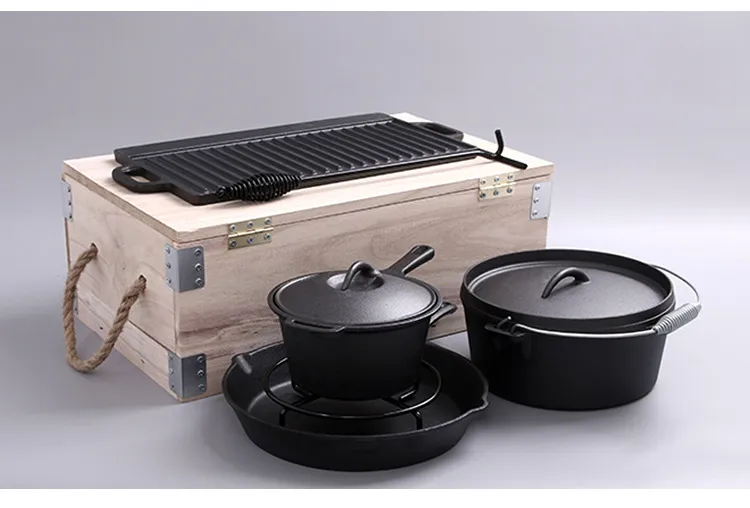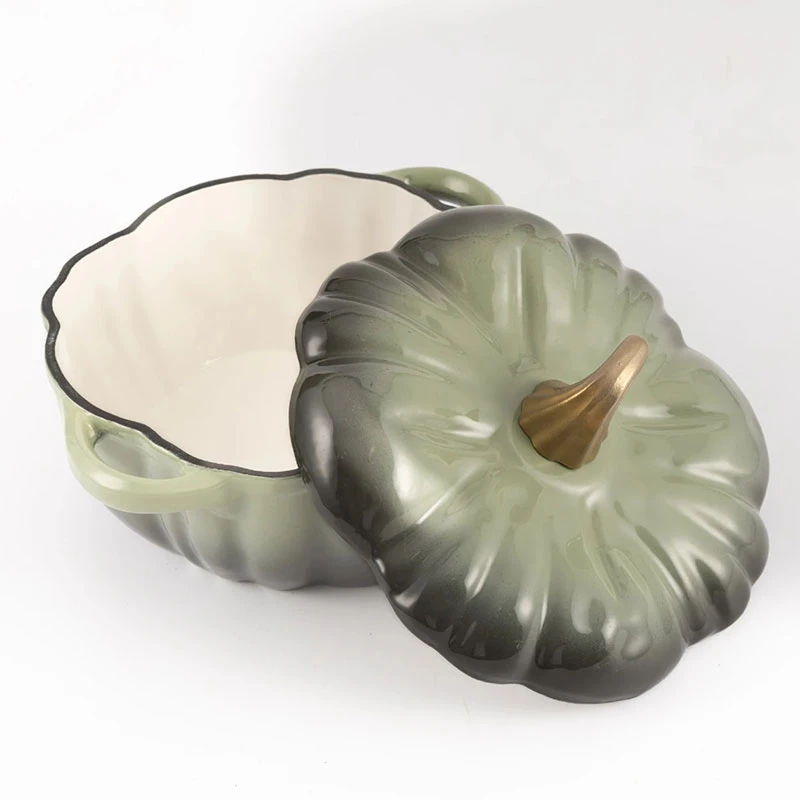
How to Clean a Sticky Dutch Oven Pot
A sticky Dutch oven pot can be a common issue, especially if you frequently use your печи чуянии Голландия for cooking a variety of dishes. Whether it's burnt-on food, grease buildup, or improper seasoning, a sticky pot can be frustrating. However, with the right techniques and tools, you can restore your Dutch oven to its original condition and ensure it continues to perform well.

Understanding the Problem with Your Танӯри Голландия
A sticky Dutch oven pot can be a frustrating issue, but it's one that can be resolved with the right approach. Whether it's leftover food residue, burnt-on stains, or a buildup of grease, knowing how to clean your Dutch oven pot effectively is essential for maintaining its performance and longevity. Before diving into the cleaning process, it's important to understand the common causes of stickiness. These can range from improper seasoning to overcooking or not cleaning the pot soon enough after use. By addressing these issues, you can prevent future problems and keep your Dutch oven in optimal condition.
Initial Cleaning Steps for Your Dutch Oven Pot
The first step in cleaning a sticky Dutch oven pot is to remove any loose debris. Start by allowing the pot to cool down slightly, but not completely. Warm water can help loosen stuck-on food. Use a soft brush or sponge to gently scrub the surface. Avoid using harsh chemicals or abrasive scrubbers, as these can damage the seasoning on your печи чуянии Голландия. If the residue is particularly stubborn, you can use a small amount of dish soap, but be sure to rinse thoroughly afterward.
Dealing with Burnt-On Residue in Your Танӯри оҳанин Голландия
For burnt-on residue, a more aggressive approach may be needed. One effective method is to use a mixture of water and baking soda. Create a paste by combining equal parts of water and baking soda, and apply it to the affected areas. Let the paste sit for about 30 minutes to an hour, then scrub gently with a brush. The baking soda acts as a mild abrasive, helping to lift and remove the burnt-on residue without damaging the cast iron. After scrubbing, rinse the pot thoroughly with warm water.
Re-seasoning Your Танӯри Голландия After Cleaning
Once you've removed the sticky residue, it's important to re-season your Dutch oven to prevent future sticking and maintain its non-stick properties. Start by drying the pot completely, either by placing it on a stovetop over low heat or in a warm oven. Once dry, apply a thin layer of vegetable oil or shortening to the entire surface, including the lid and handle. Place the pot upside down in a preheated oven at 375°F (190°C) for about an hour. This process will help restore the seasoning and ensure your Dutch oven remains in excellent condition.
Preventing Future Stickiness in Your Dutch Oven Pot
Preventing future stickiness involves proper maintenance and care. Always allow your Dutch oven pot to cool slightly before cleaning, and avoid soaking it in water for extended periods. Regularly seasoning your pot will also help maintain its non-stick surface. Additionally, using the right amount of oil or fat when cooking can prevent food from sticking. Lastly, storing your Dutch oven in a dry place will help prevent rust and maintain its seasoning.
How to Clean a Sticky Dutch Oven Pot FAQs
How often should I season my Dutch oven?
Season your Dutch oven whenever you notice the surface becoming sticky or dull. This can vary depending on how frequently you use it, but generally, seasoning every few months is a good practice.
What is the best way to clean a печи чуянии Голландия?
The best way to clean a печи чуянии Голландия is to use warm water and a soft brush. Avoid using soap unless absolutely necessary, and always rinse thoroughly. For stubborn residue, a baking soda paste can be effective.
Can I use metal utensils with my Dutch oven pot?
Yes, you can use metal utensils with your Dutch oven pot, but be gentle to avoid scratching the surface. Using wooden or silicone utensils can also help preserve the seasoning.
How do I remove rust from my Dutch oven?
To remove rust from your Dutch oven, use a mixture of white vinegar and water. Apply the mixture to the rusted areas and let it sit for a few hours. Scrub gently with a brush, then rinse and dry thoroughly. Re-season the pot afterward to prevent further rusting.
What should I do if food is stuck to my Dutch oven?
If food is stuck to your Dutch oven, fill the pot with warm water and bring it to a simmer. Let it sit for a while to loosen the food, then scrub gently with a brush. Avoid using harsh chemicals or abrasive scrubbers.
-
Soups to Make in a Pumpkin Dutch OvenАхборAug.23,2025
-
Storing Your Cast Iron Camping Set ProperlyАхборAug.23,2025
-
Baking No-Knead Bread in a 5.5 Qt Dutch OvenАхборAug.22,2025
-
Essential Accessories for Your Cast Iron Camp OvenАхборAug.22,2025
-
Preheating Your Iron Pizza Pan CorrectlyАхборAug.22,2025
-
Differences Between a Round and an Oval Dutch OvenАхборAug.22,2025


